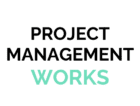Techniques for Gathering Requirements
There are a variety of techniques that can be used successfully to gather business requirements and which one(s) you use will depend on the type of projects and the types of people involved in the project. The most common are brainstorming, story-boarding/story-telling, interviewing and prototyping.
Brainstorming tends to be used early in the process to produce a wealth of initial ideas from a wide range of people involved. Storyboarding is used later on when you want to clarify tasks and break a project down into easily identifiable activities. Interviewing is essential for gathering some of the finer details about requirements and expectations and also uncovering assumptions that may have been made.
Prototypes are the first stage at which abstract ideas start to take on a physical reality and it is often only at this stage that many people can visualise what to expect.
Avoiding Ambiguity
Once the initial requirements are gathered they need to be documented in such a way that all of the people involved, from the technical team members right up to the most senior executives can read them and clearly understand them and each specified requirement correlates with a business objective.
The requirements are not the place to use technical jargon that not everyone might understand and neither should they contain so much information that their meaning becomes unclear and is obscured by information overload.
Understanding Project Scope
All projects require boundaries if they are to meet business objectives within defined criteria such as cost, time and quality. Well-defined project scope requires not only clearly defined requirements but also agreement on those requirements by the stakeholders and a formal mechanism to avoid scope creep (such as a change control process)
Scope creep occurs when un-authorised (as opposed to authorised) changes take place during the course of the project or changes take place which are not required to meet the stated business aims of a project. The focus of every project should always be to achieve the business aims – nothing more or less.
Identifying Appropriate Solutions
Projects are usually started in response to some short-coming or problem with the status quo but a single problem can have more than one possible solution so a business analyst needs to be able to analyse each potential solution to decide which is the best fit for the current problem. They should then be able to articulate to the stakeholders why the suggested solution is the most appropriate. The most common methods used to do this are Business Process Modelling, Gap Analysis and/or Root Cause Analysis.
Communicating with the People
No project will ever be successful if a business analyst cannot effectively communicate with the users, stakeholders, client, project manager and project team members involved. Working with people is an essential part of the BA role and a BA will only be successful if they can deal with people at all levels sensitively and diplomatically in order to fully understand what is required and expected.



